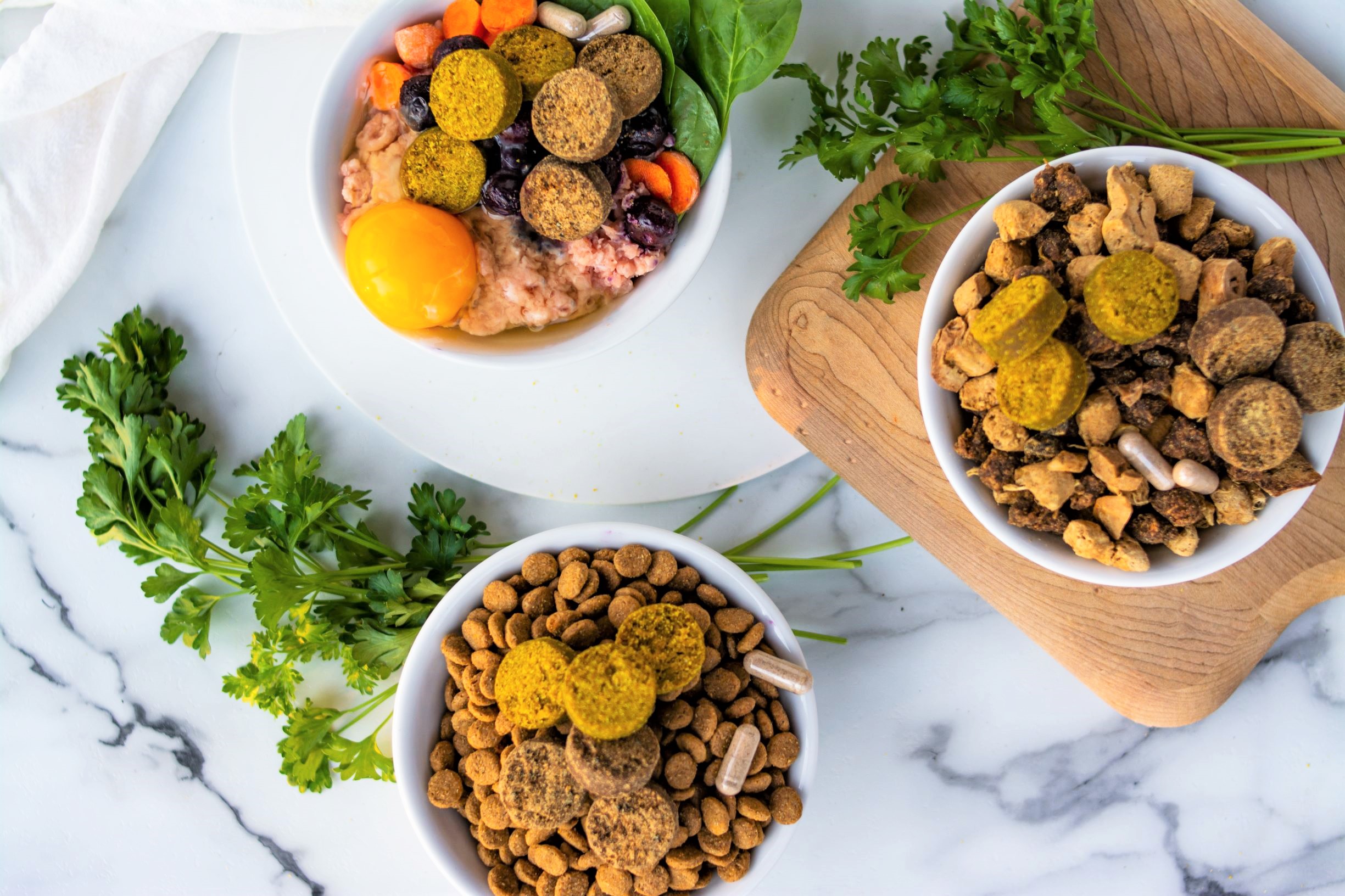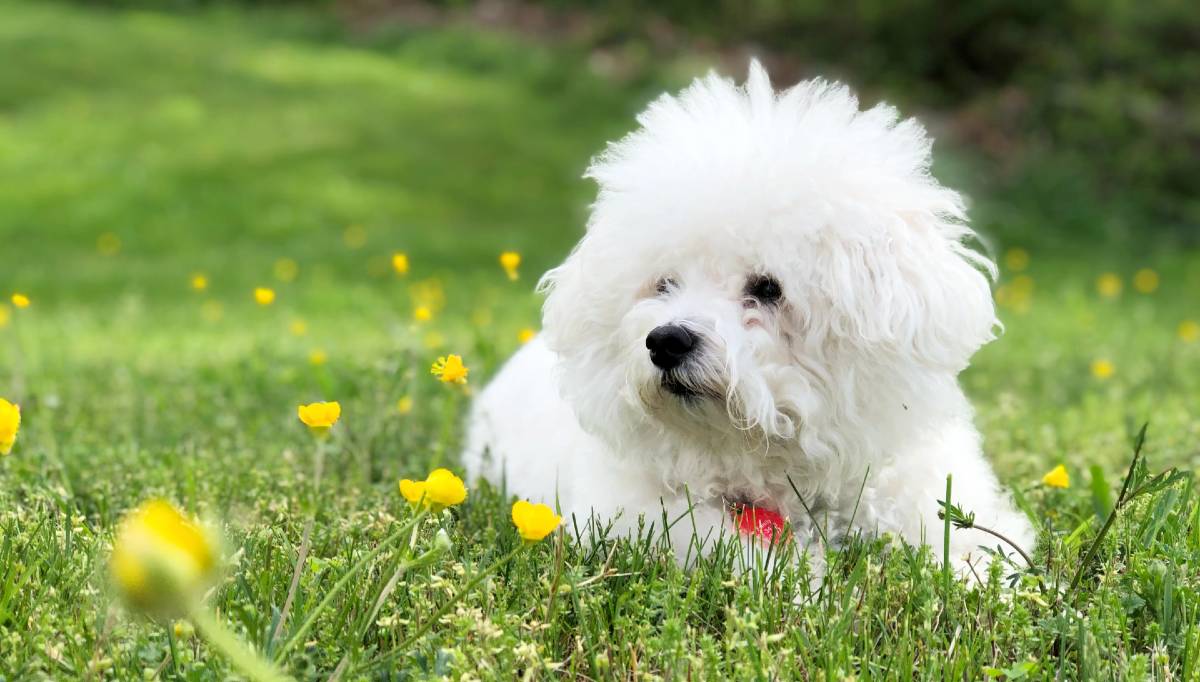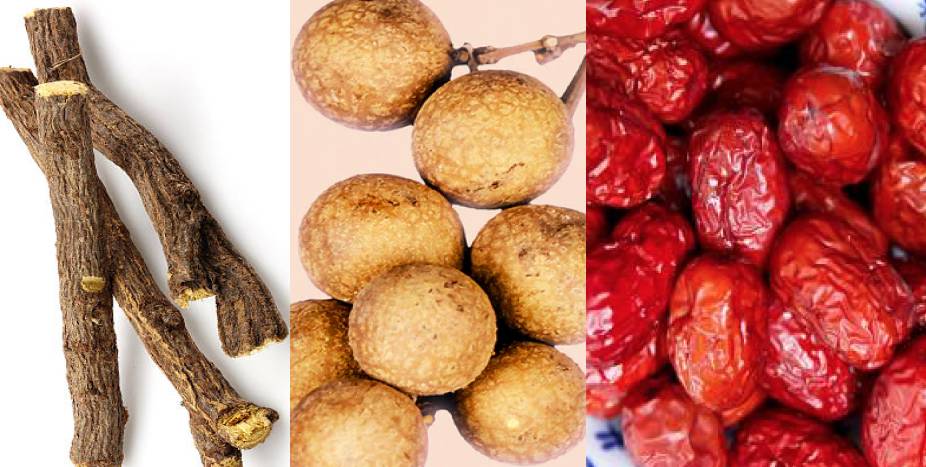I sat down with Dr. Bessent to talk all about seasonal allergies– what they are, what they look like, and how, as a holistic vet, she approaches them a bit differently.
We touched on the roles of milk thistle and foods in the allergy regimen. We waded into the topic of TCVM (Traditional Chinese Veterinary Medicine), including what in the (traditional Chinese medicine) world yin-tonifying herbs do for the allergy dog.
Here are the top 5 takeaways from the conversation.
On The Agenda
1. The Allergen Isn’t The True Culprit
You, me, the dog next door, we’re exposed to allergens every day. Our immune systems respond appropriately– we may sneeze or cough, even grumble a bit, all of which are normal protective mechanisms to rid the body of those dust spores or danders. But then we go on our merry way, preferably for walkies or fetch with our pups.

But an allergic reaction is a hyper-reactive immune response. They occur when our bodies hyper or over-react to allergens.
It’s the hyper-reaction in the body that’s to blame for the pesky symptoms, not the allergens themselves.
Dr. Bessent’s Nugget of Wisdom: “Regardless of what triggers a hyper-reaction (pollens, hay, mold), the focus should really be on the hyper-reaction happening in the body. It’s causing the heat and inflammation that’s expressed in the skin.”
2. The Difference Between Allergies & Dry Skin is More Obvious Than You’d Think

As pet parents, we’re all quite familiar with playing detective, so when a dog starts itching, we, the natural problem solvers that we are, start to run through a list of possibilities– allergies are always on that list.
But, allergy symptoms are actually a lot more than just itching, and itching, and itching (though it does play a large part in it).
Allergies are a hyper-reaction, an extreme inflammatory response that creates heat, inflammation, and stress.
Allergy
an extreme inflammatory response
- The skin is hot and red to the touch because it’s inflamed.
- That inflammation tends to go to the head (think ears) and to the butt and the belly and armpits– areas where the skin is thinner.
- The coat has a gooey or greasy feel.
- Super, super, super, itchy with constant scratching 24/7.
Dry Skin
the skin lacks hydration
- The skin is either normal temperature or even a little cool.
- You might see flakes on the skin and coat.
- No gooey, greasy feel.
- Itchy.
There’s a rather stark contrast between the two, so resolving each requires different approaches.
A little nugget of wisdom from Dr. Bessent: “The dog that just has a dry itch– we're going to use targeted nutrients to rehydrate the skin and get rid of the itch. For the seasonal allergy dog that's hot, inflamed, and greasy, we want to decrease the heat and the inflammation.”
3. Your Dog’s Liver Plays A Crucial Role In Allergies
Detoxifying the body actually helps to bring down the heat and inflammation that the hyper-reaction is causing. And we all know which organ does that (see above).
To help detoxify and protect the liver, every allergy dog should be using Milk Thistle.
It’s hepatoprotective, meaning the herb prevents damage to the liver, and helps to stimulate new liver cells’ growth to replace the dead or dying, which supports the liver through the allergic reaction.

Milk Thistle is supremely important for allergy pets who have been taking corticosteroids and antihistamines on a daily basis for extended periods of time. Milk Thistle can protect the liver from future damage and repair existing damage by flushing out harsh and harmful toxins that accompany pharmaceuticals.
A little nugget of wisdom from Dr. Bessent:
“From both a Western & Eastern perspective, you want to detox the body to decrease the heat and the inflammation. Milk thistle is hepatoprotective, so it not only protects the liver, but also reinvigorates Qi to address stagnation (heat & inflammation).”
4. Be Picky & Choosy About What Goes In The Bowl

The food you choose for your four-legger affects them in the same way food we eat affects us. Spices can make you sweat. A slice of watermelon is exponentially more refreshing in the heat of summer. You lean towards hearty root vegetables and warming stews in cold months.
In its simplest form, this is food energetics– food and their warming, cooling, or neutral properties can act as a gentle persuasion to balance the hot and cold in the body. These principles apply to the allergy dog, too.
Allergy dogs are hot, inflamed, and stressed. So, you need to add cooling proteins, fruits, and vegetables to their bowl to help balance their hot, inflamed body during allergy season.
If you’re feeding them hot foods, it’s essentially pouring kerosene on the fire, which is why you need to avoid this kindling.
A little nugget of wisdom from Dr. Bessent: “With so much heat, cooling foods need to be in the bowl to counteract the heat and inflammation the allergy dog is experiencing. That means using proteins like duck, rabbit, and certain fish during allergy season.”
5. Be Proactive As Possible Before Allergy Season

Perhaps, the biggest little nugget of wisdom from my conversation with Dr. Bessent was to be as proactive as possible before allergy season. Procrastinators, pay attention.
To be proactive, you have first to set up a solid foundation of skin health. Nutraceuticals like Omega 3 (EPA & DHA) & 6 (GLA) nourish the skin and strengthen its integrity. These essential fatty acids can do so much more for the allergy dog, too.
Then 2-3 months before allergy season, add a combination of cooling, calming, and yin-tonifying herbs to offer allergy dogs and cats much-needed relief.
The herbs help surface symptoms by cooling the skin and addressing the issue’s root by balancing the body’s defenses. Still, they take time to build in the system, so it’s about acting proactively and adding them before allergy season.
When you do, they get to the root of the issue…
- Heat-draining herbs
Heat-draining herbs or cooling herbs can naturally decrease and drain the excessive heat and inflammation that develops into those uncomfortable symptoms.
- Yin-tonifying herbs
Then, with yin-tonifying herbs, you can help replenish fluids faster, effectively helping protect the fluids in the body and encouraging the body’s immune response to return to its normal, balanced state.
- Calming Herbs
The itch is constant and incessant for an allergy pet, as you may have seen first-hand. So they scratch and claw, trying to get to it, licking and gnawing so much that they rub areas raw.

Dr. Bessent uses a combination of calming herbs to quiet and calm an allergy pet, so they aren’t compelled to scratch that itch and make their symptoms worse.
These cooling, calming and yin-tonifying herbs should be added to a bowl of cooling foods during allergy season too, of course.
Then, if you do need to use pharmaceuticals (they offer quick relief to those symptoms, so they do have a place at the table), having this proactive allergy regimen in place may help resolve allergies quicker– which really means you and your four-legger are back to enjoying the fresh air during walks.
For anyone reading this at the height of ragweed season, I can feel your furrowed brow. While we’re stressing that you’re as proactive as possible, you can still make such a difference, but just know herbs take a bit to build.
There is a lot to digest here. But I think that Dr. Bessent says it best, if you are looking for a simple checklist to get started.

“The goal is to do everything we can to be proactive before the allergy season.
So, develop a solid foundation with nutraceuticals like Omega-3 fatty acids and GLA from Omega-6 fatty acids.
During the allergy season, use cooling foods and a combination of herbs to bring down that heat and inflammation and rebalance the body.”
Share this Post

Kayla
Kayla is the Content Editor for Herbsmith. She has a cat named Professor Cat-Faced Meowmers, who goes by Kitty, and a goof of a dog, named Duck. She stays busy biking trails, playing board games, and searching for the next best craft beer.




